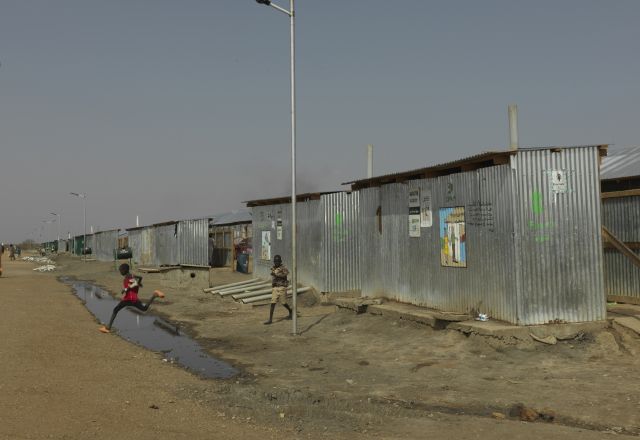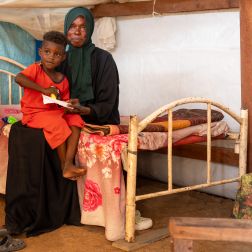
I lost my nephew because of hunger. He was just 15 years old. There is no food at home.
- 2 mins read time
- Published: 2nd August 2024
Hunger crisis worsens in South Sudan
Can you imagine having to eat wild vegetables and fruit just to survive? That’s what people in in Pibor county in South Sudan must do, as the hunger crisis there gets worse.
The number of people dying from starvation is rising. The rainy season, which takes place from June to September, is expected to reach record-high levels. Flooding will destroy people’s crops. People in this part of South Sudan have limited options for food. They survive on wild vegetables and desert dates, which are a type of fruit. This is not enough to stop hunger. The heavy rains are also stopping aid flights. The situation could get much worse, very quickly.
- Over 7 million people, that’s more than half of the population, are already facing extreme hunger.
- 9 million people, including over 1.6 million children who are at risk of malnutrition, will need humanitarian assistance. This is according to the 2024 Humanitarian Needs and Response Plan for South Sudan.
- 79,000 people face life-threating hunger, more than double that of last year.
- Over 70% of the country has been affected by floods over the past six years.
“The scenes of suffering are heart-wrenching. Thousands of people both young and old are hungry and children severely malnourished; many people are going for days without anything to eat. Just this month alone, (July) more than 12 people died from starvation,” says Dr Manenji Mangundu, Oxfam South Sudan Country Director.
South Sudan is experiencing climate challenges, like flooding and drought. There are also other issues, such as an economic crisis and ongoing fighting in neighbouring Sudan. Over 750,000 people have fled to South Sudan because of this fighting. Transit centres designed for 4,000 are holding more than five times this number. The communities in South Sudan are already facing extreme hunger.
In addition to all this, people are contending with the plummeting of the South Sudanese currency. The real food inflation rate is at 164%, according to the World Bank. This is defined as food inflation minus overall inflation, and South Sudan has the highest rate in the world.
This makes it even harder for people to access food, as they can’t afford it. The price of items like wheat and flour has increased, with some goods tripling in price since March this year.
“Three months ago, I used to buy 10kg of flour for 3500 South Sudanese Pound (SSP) (€1.85). Now it costs me 15,000 SSP (€8.60). Unfortunately, the prices keep rising and we can no longer afford it due to lack of access to cash,”— says Adau Nyok, who lives in the capital of Juba.
Oxfam and partners are providing life-saving assistance, like food, cash, clean water supplies and sanitation in South Sudan. However, more funding is needed.




